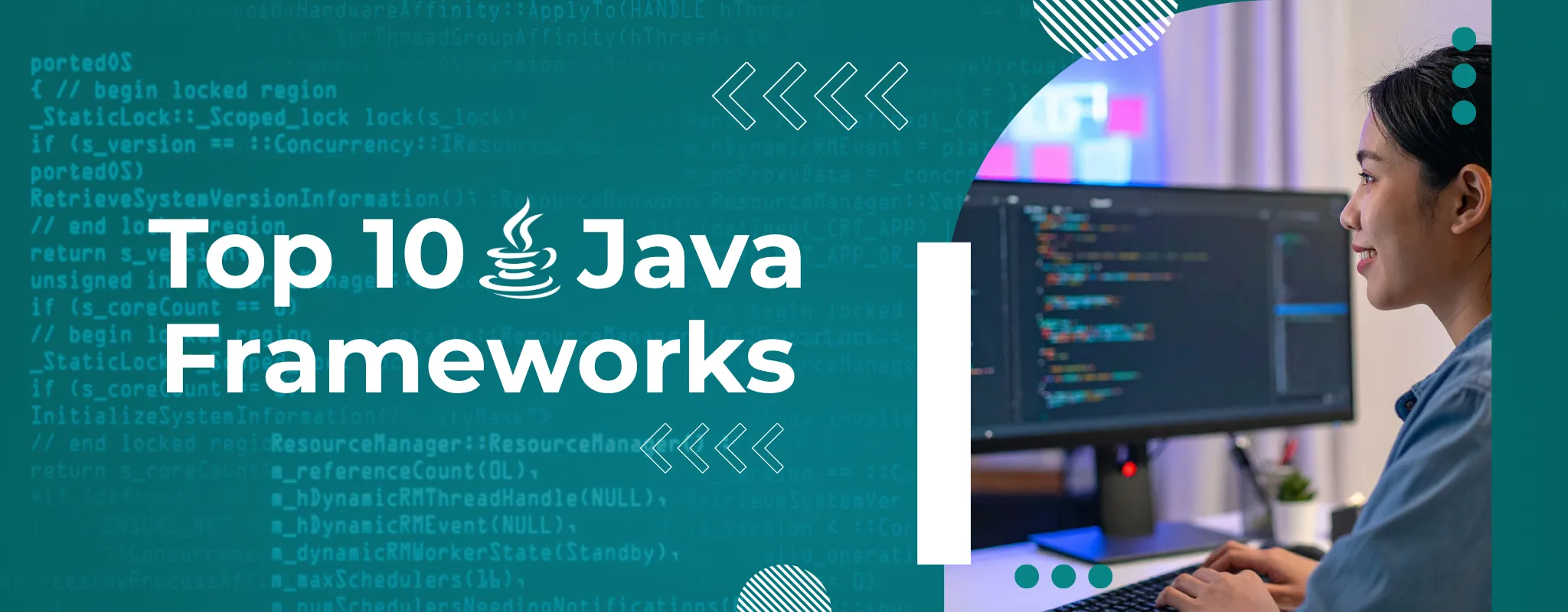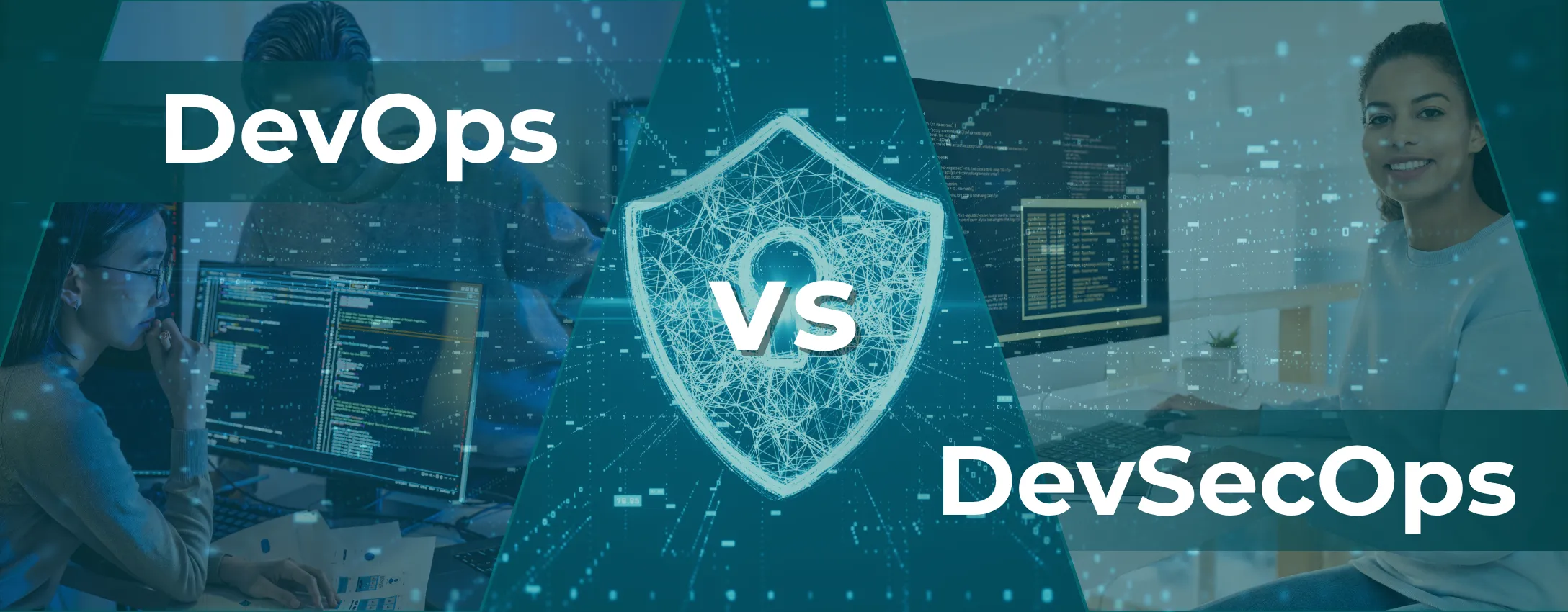
We often listen to developers debate which Java framework they need to stick with in 2025—and actually, the communique is in no way as easy as “simply use Spring” or “go along with what’s trending.”
People count on there being a one-length-fits-all solution, however in case you look carefully at how present-day Java groups work, things get interesting.
See, it’s no longer pretty much choosing a framework with lots of capabilities or the only one anyone’s tweeting about. The best developers think in terms of scalability, speed, security, and how easily their teams can maintain code months—or years—down the line.
And yet, here’s the twist: it’s now not usually the most important or oldest framework’s success. Some of the most effective teams that deliver results are the usage of lightweight frameworks you may not count on, even as others stay with the classics due to reliability and ecosystem power.
In 2025, the top Java frameworks aren’t just “popular”—they’re solving actual problems:
✔ Managing complex architectures
✔ Speeding up development
✔ Securing applications
✔ Integrating with databases
✔ Powering microservices and enterprise systems
So instead of thinking “Which Java framework is the best?” the better question is:
Which framework fits your scale, your goals, and your workflow?
That’s precisely why we’re taking a better look at the pinnacle 10 Java frameworks shaping development in 2025—not just by means of name, but with the aid of what they actually help you obtain.
What Are Java Frameworks?
Java frameworks provide structured environments that boost development with the aid of supplying predefined code templates and tools. They help developers manage unusual programming duties, enhance code business enterprise, and preserve consistency across apps.
Definition and Purpose
A Java framework is a reusable software program platform designed to simplify the improvement of Java applications. It gives pre-written code, libraries, and tools that reduce repetitive duties, saving time and effort for the duration of coding. Frameworks recognition on streamlining backend services, web programs, and company solutions.
Key Features
Frameworks don’t just come up with tools; they come up with structure. From handling dependencies to coping with statistics and security, they keep your code organized and modular. The result? Cleaner projects and smoother performance without the extra hassle.
They offer integration with databases, application servers, and external services. Frameworks often support testing tools, allowing developers to detect issues early. These are designed to grow with your app. They make it easy to manage bigger user loads and keep your code easy to maintain.
List of the Top 10 Java Frameworks
Java development in 2025 is based on several mounted and rising frameworks recognized for their efficiency and scalability. These tools support diverse application types, from web to enterprise solutions.
A Quick View
| Framework | Focus Area | Notable Feature |
|---|---|---|
| Spring | Enterprise, Web | Dependency Injection |
| Hibernate | ORM, Database | Simplifies database access |
| Jakarta EE | Enterprise | Standard enterprise platform |
| Micronaut | Microservices, Cloud | Fast startup, low memory usage |
| Struts | MVC, Web applications | Modular structure |
| Vaadin | Rich web UIs | Component-based UI |
| GWT | Client-side web | Java to JavaScript compilation |
| Play Framework | Reactive web | Asynchronous processing |
| Dropwizard | RESTful APIs | Quick, lightweight |
| Blade | Lightweight web apps | Fast and minimalistic |
1. Spring Framework
The Spring Framework is one of the most broadly used and powerful Java frameworks for enterprise-grade app development. It streamlines the advent of scalable, maintainable, and testable programs through its modular structure, complete infrastructure assistance, and dependency injection ideas.
Key Benefits
- Loose coupling thru dependency injection: Promotes flexibility and will increase testability by using setting apart additives.
- Aspect-oriented programming (AOP): Simplifies the control of transverse issues consisting of logging, transactions and security.
- Simplified transaction management: Offers consistent and declarative transaction management in multiple databases and environments.
- Extensive ecosystem: Supports integration with different frames and tools for corporate and cloud solutions.
Integration Capabilities
- Works smoothly with Hibernate for ORM and persistence.
- Fully compatible with Spring Boot for creating microservices and standalone apps.
- Joins with cloud platforms, messaging systems like Kafka, and RabbitMQ. Also, RESTful APIs for modern architectures.
Core Components
- Core Container: Includes Beans, Context, and Dependency Injection modules.
- Spring AOP: Manages factors and cross-cutting functionalities.
- Spring Data / JDBC / ORM: Simplifies database operations and persistence management.
2. Hibernate Framework
Hibernate is a generally used Java framework for mapping objects to database tables. It reduces repetitive SQL and handles ordinary database duties automatically. This makes working with information faster and more efficient.
Key Benefits
- Database Independence: Hibernate works with more than one database while not having primary code adjustments, thanks to its integrated dialect device.
- Lazy Loading: Loads statistics simply whilst required, improving overall performance and memory efficiency.
- Automatic Schema Generation: Handles table creation, updates, and relationship mappings automatically.
- Transaction Management: Ensures statistics consistency via built-in transactional guide.
Integration Capabilities
- Commonly paired with Spring Framework for dependency injection and transaction handling.
- Supports Spring Boot for faster setup and configuration.
- Integrates with caching frameworks like Ehcache or Redis for performance optimization.
Core Components
- SessionFactory: Manages sessions and database connections.
- Entity Classes: Represent Java objects mapped to database tables.
- HQL: Enables database-unbiased queries for flexibility and portability.
3. Jakarta EE
Jakarta EE, which was referred to as Java EE, is sort of a big toolbox for constructing powerful computer packages. It gives developers pre-made tools to create apps for the internet, organizations, and the cloud. Instead of starting from scratch, they use this platform to construct quicker and smarter. Think of it as a dependable basis that continues the whole lot regular throughout large projects.
Key Benefits
- Standardized APIs: Ensures interoperability and portability for the duration of organization’s programs.
- Modular Architecture: Encourages scalability and maintainability in big systems.
- Integrated Enterprise Capabilities: Offers integrated aid for databases, messaging, and safety.
Integration Capabilities
- Plays properly with Spring and Hibernate to reinforce flexibility and ORM aid.
- Runs without problems on business enterprise servers like WildFly, GlassFish, and Payara.
- Built for microservices and cloud-native apps, assisting Jakarta EE 10 and more recent.
Core Components
- Servlets & JSP help make web pages that can change and respond to users.
- JPA makes it easy to save and get information from a database.
- CDI / JMS / EJB help different parts of an app talk, share tasks, and do big jobs smoothly.
4. Micronaut
Micronaut is a lightweight system for Java apps. It works well for cloud and serverless projects. It uses compile-time dependency injection. This makes apps start quickly and use less memory.
Key Benefits
- Ideal for serverless and containerized environments.
- Uses bring together-time DI, putting off runtime reflection overhead.
- responsive, scalable services the usage of non-blocking off I/O.
Integration Capabilities
- Works smoothly with Spring or Hibernate to beautify flexibility and ORM talents.
- Compatible with employer servers consisting of WildFly, GlassFish, and Payara.
- Supports microservices and cloud-local deployments through Jakarta EE 10 and past.
Core Components
- Compile-Time Dependency Injection Engine: Ensures fast performance and lightweight runtime.
- AOP Support: Manages aspects such as logging and security.
- HTTP Server & Client Modules: Facilitate microservices communication and REST APIs.
5. Struts
Apache Struts is a strong MVC-based framework that simplifies Java web development via isolating business logic, presentation, and control drift. It’s widely used in legacy and enterprise web applications.
Key Benefits
- MVC Design Pattern: Encourages modular and maintainable code.
- Built-In Validation: Reduces repetitive code and simplifies shape dealing with.
- Scalable for Enterprise Apps: Suited for complex, big-scale internet systems.
Integration Capabilities
- Integrates with Hibernate or JPA for ORM and data management.
- Works with Spring for DI and transaction control.
- Extensible with custom tag libraries and third-party plugins.
Core Components
- ActionServlet: Central controller managing request flow.
- ActionForm / Action: Handle form data and business logic.
- struts-config.xml: Explain navigation rules and app configuration.
6. Vaadin
Vaadin is a Java framework for constructing present-day, responsive web interfaces. It uses ready-made components, so tech experts don’t have to worry about front-end information. This helps you to create interactive web apps totally in Java.
Key Benefits
- Lets you build user interfaces faster using ready-made components
- Makes managing the front-end easier while keeping applications secure
- Connects smoothly with backend services and databases
Integration Capabilities
- Works perfectly with Spring Boot to connect the app’s backend
- Can use Jakarta EE and Hibernate/JPA to save and manage data
- Can run easily on the cloud or inside small “containers” like boxes for apps
Core Components
- Includes buttons, forms, grids, and other factors for creating interfaces
- Lets you create responsive pages with pre-made layouts and themes
- Handles consumer actions and interactions easily
7. GWT (Google Web Toolkit)
Google Web Toolkit enables developers to construct complicated, excessive-performance purchaser-aspect web programs in Java that compile to optimized JavaScript.
Key Benefits
- Java-to-JavaScript Compilation: Write once in Java, installation throughout browsers.
- Rich UI Development: Supports modular and maintainable front-end architecture.
- Strong Typing & Debugging: Simplifies large-scale web app development.
Integration Capabilities
- Integrates with Spring or Java EE backends for data handling.
- Works with RESTful APIs for dynamic data communication.
- Compatible with modern JavaScript libraries for enhanced UI functionality.
Core Components
- Widgets: Pre-built components for UI development.
- Panels / Layouts: Define and structure visual layouts.
- Event System: Handles client-side interactions effectively.
8. Play Framework
The Play Framework is a modern, reactive full-stack framework for Java and Scala, designed to form speedy and can manage lots of traffic web applications using the MVC architecture and asynchronous I/O.
Key Benefits
- Handles many duties immediately without slowing down.
- Connect all components of your app—web, data, and logic—smoothly.
- Developer Productivity: Offers hot reloading and minimal configuration.
Integration Capabilities
- Works seamlessly with Hibernate/JPA to manage data efficiently.
- Easily handles RESTful services and JSON for modern web applications.
- Works with Akka for concurrent, distributed applications.
Core Components
- Controller: Manages HTTP requests and routing.
- Model: Encapsulates business logic and data structures.
- View (Templates): Renders dynamic user interfaces.
9. Dropwizard
DropWizard is a lightweight, production-ready Java framework for building RESTful Internet services. It integrates the best libraries into a cohesive, easy-to-use platform for developing microservices.
Key Benefits
- Minimal Configuration: Pre-integrated libraries simplify setup.
- Comes with built-in metrics, logging, and security for immediate use.
- Designed for microservices and works perfectly with REST APIs.
Integration Capabilities
- Works with Hibernate/JPA for data persistence.
- Integrates Jetty for web serving and Jersey for REST APIs.
- Compatible with Jackson for JSON processing and serialization.
Core Components
- Jetty: Embedded web server for running applications.
- Jersey: Framework for developing RESTful endpoints.
- Metrics & Logging Modules: Enable monitoring and diagnostics.
10. Blade
Blade is a minimalist and strong Java MVC framework designed for speedy improvement and easy architecture. It’s ideal for developers in search of simplicity and pace in small to medium projects.
Key Benefits
- Lightweight & Fast: Minimal overhead for quick startup and execution.
- Easy to Learn: Straightforward API and project structure.
- Rapid Prototyping: Great for building small applications and REST APIs.
Integration Capabilities
- Integrates with Hibernate and JPA for ORM.
- Works with templating engines for dynamic UI rendering.
- Supports integration with RESTful APIs and external libraries.
Core Components
- Routing Engine: Handles HTTP requests and routes.
- Controller Layer: Defines application logic.
- Template Renderer: Generates dynamic HTML views.
The Next Step
In this blog, we talked about some popular Java frameworks for building apps. These tools can help you create different types of programs with Java.
But using frameworks alone isn’t enough to make a project work well. You also need skilled techies who recognize how to use them properly.If you’re seeking to discover Java in greater depth or want expert guidance, don’t forget to partner with an expert Java development company.










